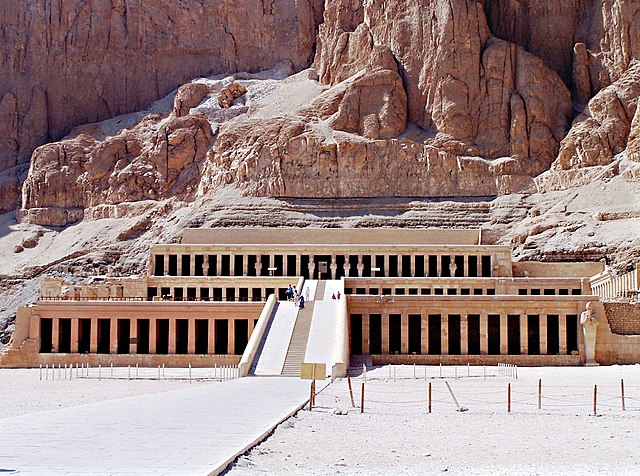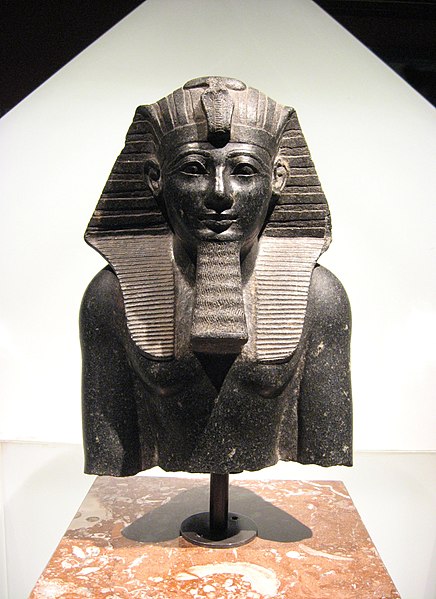Malkata, is the site of an Ancient Egyptian palace complex built during the New Kingdom, by the 18th Dynasty pharaoh Amenhotep III. It is located on the West Bank of the Nile at Thebes, Upper Egypt, in the desert to the south of Medinet Habu. The site also included a temple dedicated to Amenhotep III's Great Royal Wife, Tiy, which honors Sobek, the crocodile deity.
Malkata
The ruins of the west villas of the Ancient Egyptian palace, Malkata; north is at the top.
Polychrome glass vase from Malkata. Walters Art Museum. The city had an extensive glass industry, the first in Egypt
Painted bench end-panel at Malkata depicting a fruit bowl. In the collection of the Metropolitan Museum of Art
The New Kingdom, also referred to as the Egyptian Empire, was the ancient Egyptian nation between the 16th century BC and the 11th century BC. This period of ancient Egyptian history covers the Eighteenth, Nineteenth, and Twentieth Dynasties. Through radiocarbon dating, the establishment of the New Kingdom has been placed between 1570 BC and 1544 BC. The New Kingdom followed the Second Intermediate Period and was succeeded by the Third Intermediate Period. It was the most prosperous time for the Egyptian people and marked the peak of Egypt's power.
Queen Hatshepsut's Temple at Deir el-Bahari, was called Djeser-Djeseru, meaning the Holy of Holies
Thutmosis III, a military man and member of the Thutmosid royal line is commonly called the Napoleon of Egypt because his conquests of the Levant brought Egypt's territories and influence to its greatest extent
Akhenaten, born Amenhotep IV, was the son of Queen Tiye and he turned away from the dominant cult of Amun, relocated the capitol, and promoted that of the Aten as a supreme deity
Nefertiti - the wife of Akhenaten, she held position as co-regent with Akhenaten and may have ruled later as pharaoh in her own right (as she is one of few candidates for the identity of Pharaoh Neferneferuaten)








